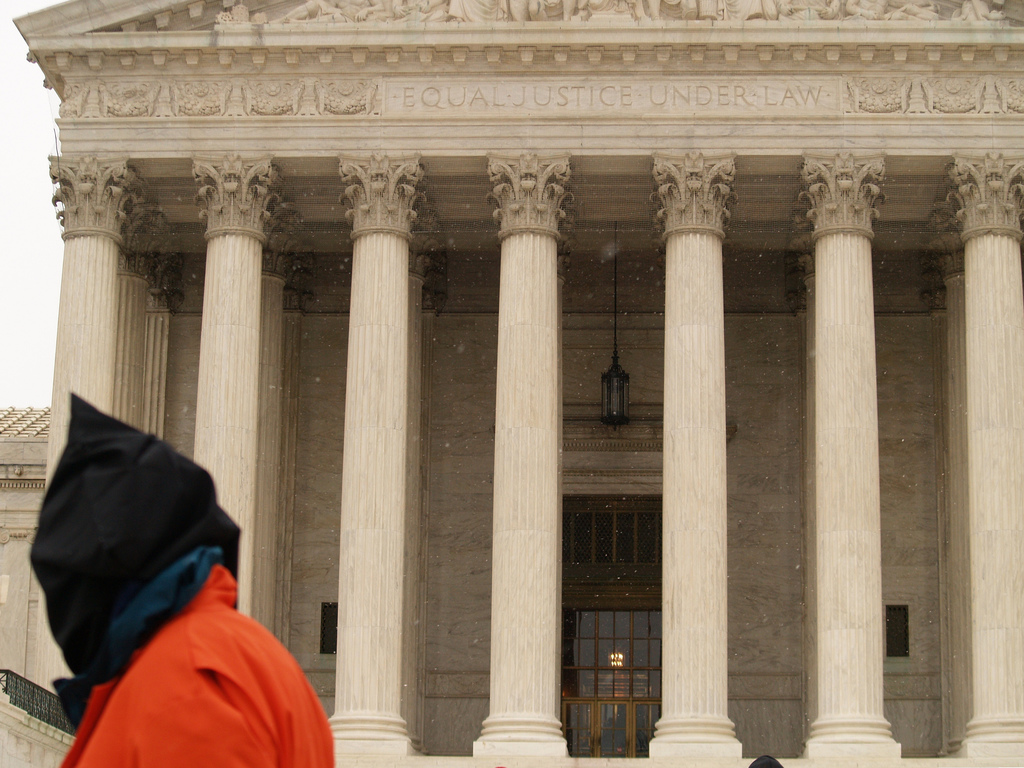By: Rachel Bond

The death penalty has been a topic of fierce debate ever since it was reinstated in the United States in 1977. The Supreme Court of the United States is about to hear yet another case regarding the death penalty, but this time the methods of lethal injection have changed. It is now a question of whether lethal injections as they are performed now are humane anymore. After botched executions in Oklahoma, Arizona, and Ohio, the court of public opinion has begun using strict scrutiny when it comes to lethal injection and the death penalty in general. It is uncertain whether the Court will take this approach in the upcoming Glossip v. Gross case.
Longstanding arguments exist both for and against the death penalty. Some of the most typical in favor of the death penalty are deterrence, retribution, and costs. There is no definitive study proving that the death penalty deters murder, nor that it encourages it. Retribution is a traditional argument, and a difficult one to rebut because you cannot quantitatively demonstrate satisfaction through avengement when someone is put to death in the same way you can measure the costs of the death penalty. However, many studies on costs have shown that cases involving the death penalty are much more costly than those where the death penalty is not on the table. Additionally, one thing seems prevalent upon a basic search in favor of the death penalty: there are very few credible websites advocating it. While there are many studies that address the validity of the death penalty, a lack of direct advocacy on the Internet might be a reflection on society’s view as a whole. When searching for information on the death penalty, putting no bias on the search terms, most of what comes up is opposition. Some of the most typical arguments opposing the death penalty are that there is no proven deterrence effect, it risks executing innocent people, and it is a waste of taxpayer money. These arguments address the lack of evidence regarding deterrence, and the costs involved. The risk of executing innocent people is mostly abstract because often there is no way to prove someone’s innocence after they are dead.
However, according to studies conducted by the American Civil Liberties Union, there have been 140 people exonerated from death row since 1973 after being proven innocent. The ACLU and other death penalty opponents feel this number speaks to the number of people who may have been executed before they could be exonerated, and that the risk of executing innocent people is just too great.
Recently, the United States has changed the lethal injection procedures from drugs that had been used since the 1970s to a new drug – midazolam. It is still part of a three-drug cocktail, but unlike the old drug, midazolam has no anesthetic properties. It is listed as an anesthetic agent, but never as an anesthetic itself. However states are now using it in place of an anesthetic before administering extremely painful drugs in lethal injections. States have had to switch their procedures due to hostility toward capital punishment in Europe, where a ban has been imposed on exporting drugs used for lethal injection. Before their use, doctors were already listing the possibly painful deaths the inmates would be experiencing. Their warnings beg the question whether our “humane death penalty” is actually carried out inhumanely.
The doctors’ warnings turned out to be at least partially correct. Around one third of lethal injections using midazolam have had “extremely troubling problems.” Although the drug has been successfully used in states such as Florida, executions in Oklahoma, Arizona, and Ohio have shown just how painful using midazolam can be. In Oklahoma, Clayton Lockett’s death took 43 minutes after midazolam was administered – a long painful death during which he was moving and making sounds. In Arizona, it took Joseph Wood two hours to die after being injected with midazolam – fifteen separate times – all the while gasping and snorting. In Ohio, Dennis McGuire gasped and struggled for ten minutes before finally dying 25 minutes after the drugs were injected.
Oklahoma wants to use midazolam again to execute three inmates. A fourth was executed in January after the Supreme Court denied a stay before finally granting cert to the case in which he was a party. In order to grant a stay, five votes of the Supreme Court are needed. However, in order to grant cert, only four votes are needed. Thus, in a case such as the Glossip v. Gross case, one of the petitioners may be denied a stay and be executed before his case is eventually granted cert. However, the other three inmates are going forward with the case. In light of the botched executions, the Court has decided to take another look at lethal injection after previously upholding it in 2008. Due to the botched executions, the three inmates’ cases are being heard together to decide whether the use of midazolam is a violation of the Eighth Amendment to the U.S. Constitution. All three inmates were convicted of first-degree murder due to admittedly heinous crimes, and were all denied a motion to stay their executions pending an appeal of the District Court, which also denied the motion. The inmates wanted the stay so their case could be decided on the merits.
The Supreme Court has granted cert to look at three issues:
(1) Whether it is constitutional for a state to use a drug that has no pain-relieving properties and cannot reliably produce unconsciousness, and whether there is an unacceptable risk of pain and suffering during lethal injection if the person is conscious;
(2) Whether the standard applies in the previous lethal injection case applies here, when the state is not using protocol similar to that case; and
(3) Whether a prisoner must establish alternative formulas for lethal injection when challenging protocol.
It is important to note the history of Supreme Court death penalty cases, which show that the Court has consistently upheld the requirement that a method not inflict “unnecessary or wanton pain” upon the inmate under the objectively intolerable test.
While the Court has previously ruled lethal injection as permissible, it was with regards to a different drug. Under the reign of this new drug regime supplant the prior, the Court must reevaluate its stance on lethal injection. It must ask important questions about the risk of pain and the humaneness of the treatment. It must look at how the law is treating death row inmates. Its ruling could be the first step toward a criminal justice system without capital punishment.
